
Content
- 1 Introduction
- 2 1. Color Coordination Principles for Kitchen and Floor Tiles
- 3 2. Pattern and Scale Relationships in Kitchen and Floor Tiles
- 4 3. Texture Combinations for Kitchen and Floor Tiles
- 5 4. Size and Format Mixing for Kitchen and Floor Tiles
- 6 5. Material Type Combinations for Kitchen and Floor Tiles
- 7 6. Installation Techniques for Mixed Kitchen and Floor Tiles
- 8 7. Design Themes and Style Coordination for Kitchen and Floor Tiles
- 9 8. Maintenance and Longevity Considerations for Mixed Kitchen and Floor Tiles
- 10 Conclusion
- 10.1 What are the key principles for successfully mixing kitchen and floor tiles?
- 10.2 How do I choose colors when mixing different kitchen and floor tiles?
- 10.3 Can I mix different tile materials like ceramic, porcelain, and natural stone?
- 10.4 What are common mistakes to avoid when mixing kitchen and floor tiles?
- 10.5 How do I maintain mixed kitchen and floor tiles with different materials?
- 11 Sources/References
Introduction
Mastering the art of mixing and matching kitchen and floor tiles opens up endless possibilities for creating distinctive, personalized spaces that reflect individual style while maintaining cohesive design harmony throughout your home. The strategic combination of different kitchen and floor tiles enables homeowners to achieve unique aesthetic effects that go beyond single-material installations while addressing various functional requirements across different areas.
Understanding how to successfully combine kitchen and floor tiles requires knowledge of color theory, pattern relationships, texture coordination, and scale proportions that create visually pleasing compositions rather than chaotic or overwhelming appearances. The best mixed kitchen and floor tiles installations demonstrate sophisticated design principles that enhance both individual tile characteristics and overall spatial harmony.
Contemporary approaches to mixing kitchen and floor tiles embrace creative freedom while maintaining practical considerations including durability requirements, maintenance compatibility, and installation feasibility that ensure beautiful results perform well over time. Modern tile manufacturing offers unprecedented variety in colors, patterns, textures, and sizes that enable creative combinations previously impossible to achieve.
The psychological impact of well-coordinated kitchen and floor tiles extends beyond mere aesthetics, influencing how spaces feel and function while creating environments that support specific activities and moods. Successful tile mixing creates visual interest, defines functional zones, and establishes design themes that enhance the overall living experience.
Professional designers specializing in kitchen and floor tiles understand the complex relationships between different materials, finishes, and installation techniques that create successful mixed-tile installations. These experts utilize proven strategies and innovative approaches to achieve stunning results while avoiding common pitfalls that can compromise both appearance and performance.
This comprehensive guide explores proven techniques and creative strategies for mixing and matching kitchen and floor tiles, providing practical advice and design inspiration that enables homeowners to create unique, sophisticated spaces that reflect personal style while maintaining professional-quality results.
1. Color Coordination Principles for Kitchen and Floor Tiles
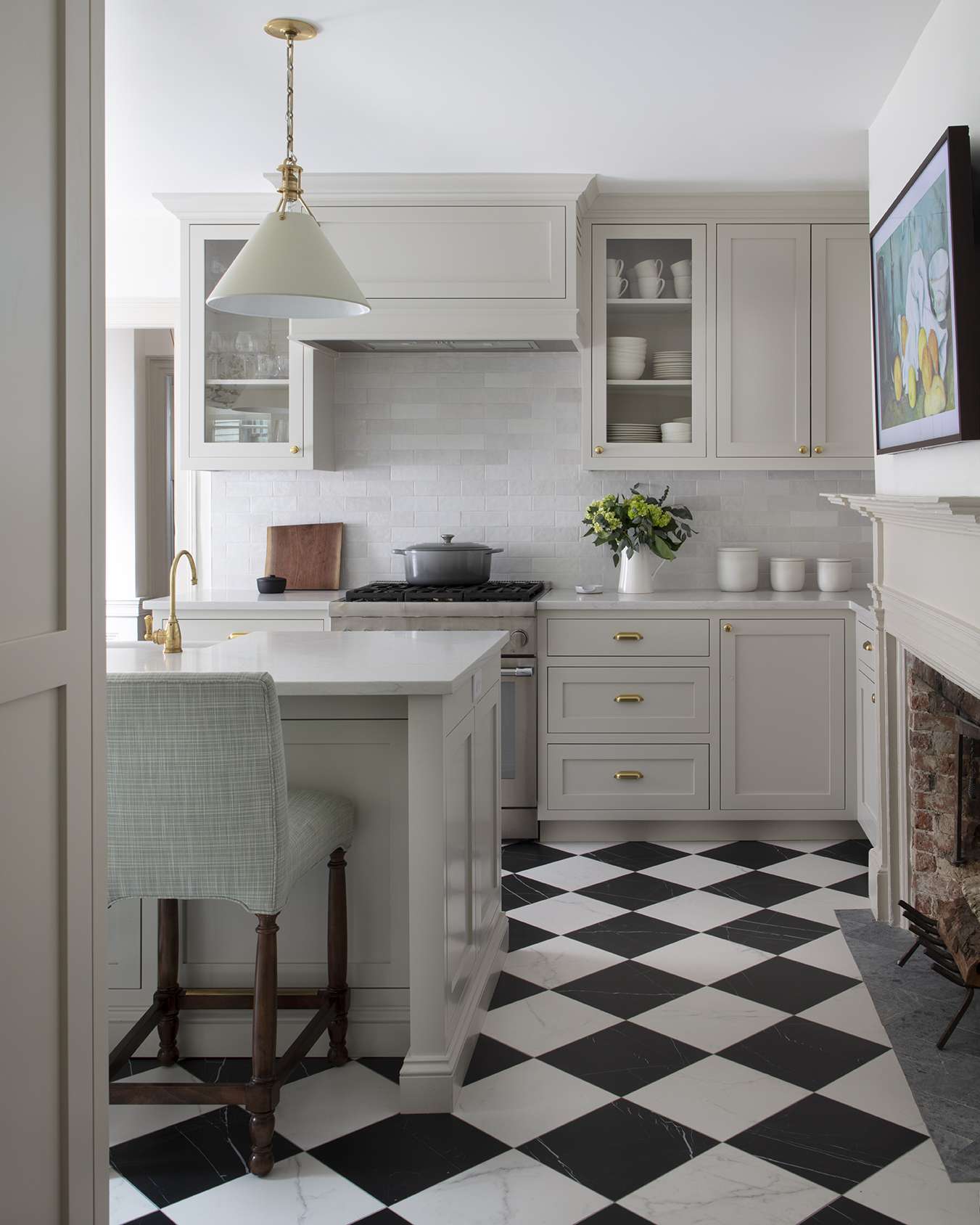
Successful color coordination forms the foundation of effective kitchen and floor tiles mixing, utilizing color theory principles and design strategies that create harmonious relationships between different tile materials while achieving desired aesthetic effects and maintaining visual unity throughout mixed installations.
Essential Color Principles for Kitchen and Floor Tiles:
- Monochromatic schemes using varying shades of the same color family
- Complementary color combinations creating dynamic contrast and visual interest
- Analogous color relationships providing subtle variation with natural harmony
- Neutral base palettes allowing accent colors to create focal points
- Temperature coordination balancing warm and cool tones effectively
- Saturation levels ensuring colors work together without competing
- Natural light considerations affecting color appearance throughout the day
- Long-term color stability maintaining relationships over time
Monochromatic color schemes provide sophisticated approaches to mixing kitchen and floor tiles by utilizing different shades, tints, and tones within the same color family. This strategy creates depth and visual interest while maintaining overall harmony, working particularly well with gray, beige, or blue color families that offer extensive variation possibilities.
The 60-30-10 color rule applies effectively to kitchen and floor tiles mixing, with 60% representing the dominant color, 30% the secondary color, and 10% accent colors that add personality and focal points. This proportion creates balanced compositions that feel intentional rather than random while providing sufficient variety to maintain visual interest.
Complementary color combinations in kitchen and floor tiles create dynamic visual effects through colors opposite on the color wheel, such as blue and orange or purple and yellow. These high-contrast combinations work best when one color dominates while the complementary color appears as accents to prevent overwhelming visual competition.
Neutral base palettes provide versatile foundations for kitchen and floor tiles mixing, with whites, grays, beiges, and blacks serving as backdrop colors that allow other materials to shine while maintaining sophisticated, timeless appeal. Neutral bases work particularly well in open-concept spaces where tile selections must coordinate with multiple room functions.
Temperature coordination ensures that warm and cool tones in kitchen and floor tiles work harmoniously together, either by maintaining consistent temperature throughout or by strategically balancing warm and cool elements to create desired ambiance and spatial effects.
2. Pattern and Scale Relationships in Kitchen and Floor Tiles
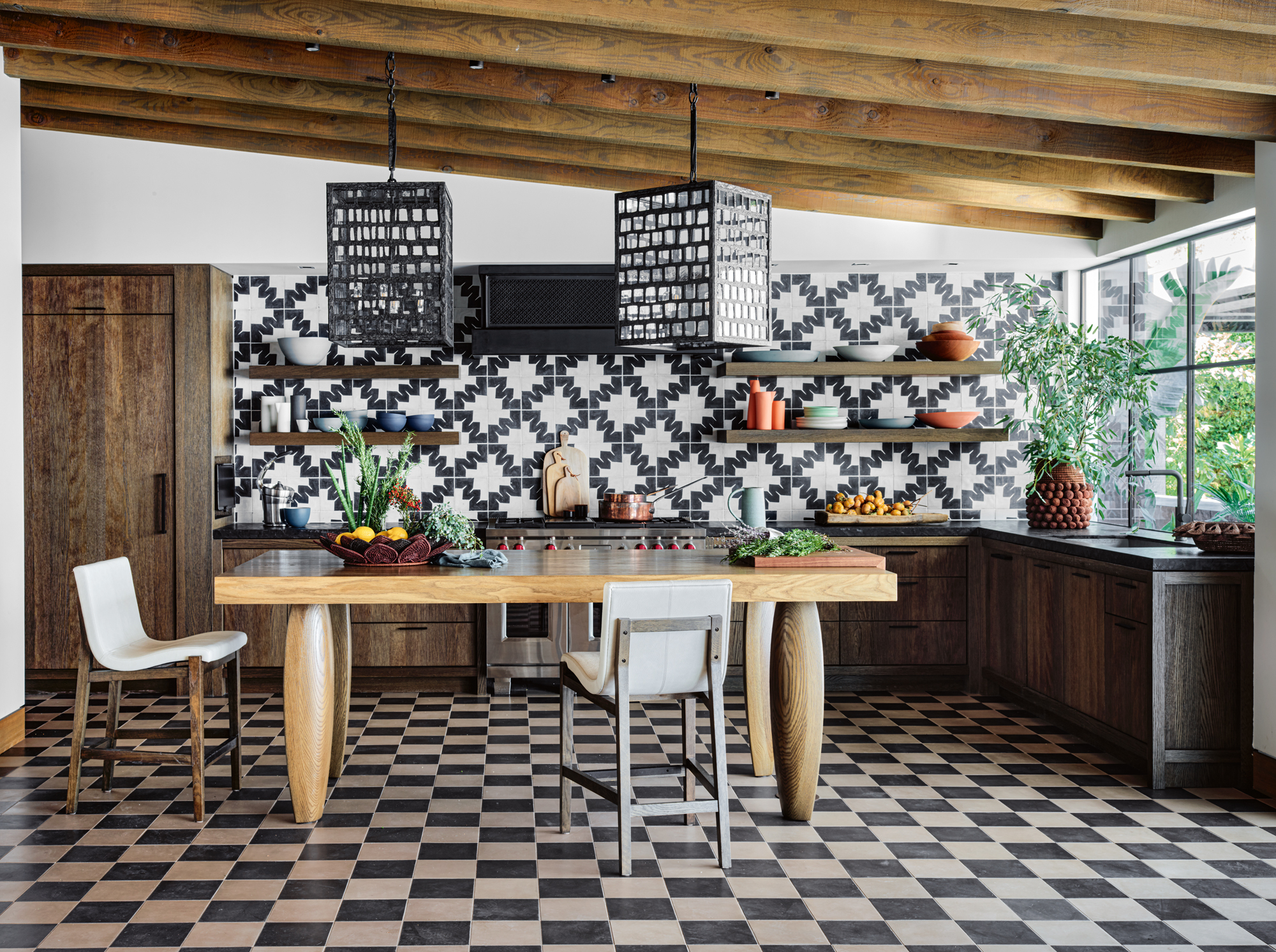
Understanding pattern and scale relationships enables successful mixing of kitchen and floor tiles by creating visual balance, establishing hierarchy, and preventing overwhelming or chaotic appearances that can result from inappropriate pattern combinations or scale mismatches in mixed tile installations.
Pattern Mixing Guidelines for Kitchen and Floor Tiles:
- Scale variation combining large, medium, and small patterns effectively
- Pattern intensity balancing busy designs with simpler alternatives
- Geometric coordination ensuring patterns complement rather than compete
- Directional flow creating movement and visual continuity across surfaces
- Focal point establishment using patterns to highlight specific areas
- Transition techniques smoothly connecting different pattern areas
- Professional layout planning optimizing pattern placement and proportions
- Visual weight distribution maintaining balanced compositions throughout
Scale variation represents a fundamental principle in mixing kitchen and floor tiles successfully, combining large-scale patterns with medium and small-scale designs to create visual hierarchy and prevent monotony. Large patterns should dominate while smaller patterns provide detail and texture without competing for attention.
The rule of three applies effectively to kitchen and floor tiles pattern mixing, suggesting that odd numbers of patterns create more visually interesting and natural-feeling compositions than even numbers. Three different patterns with varying scales and intensities typically create more dynamic and sophisticated results than two or four patterns.
Pattern intensity coordination ensures that busy, complex patterns in kitchen and floor tiles are balanced with simpler, more subdued designs that provide visual rest areas. High-intensity patterns work best as accent elements rather than dominant features, preventing overwhelming or chaotic appearances in mixed installations.
Geometric pattern coordination involves understanding how different geometric shapes and arrangements interact visually in kitchen and floor tiles installations. Linear patterns can complement curved patterns, while angular geometrics can be softened by organic shapes, creating balanced compositions that maintain visual interest.
Directional flow in mixed kitchen and floor tiles patterns creates movement and visual continuity that guides the eye through spaces while maintaining coherent design themes. Consistent directional elements help unify different patterns while creating dynamic visual effects that enhance spatial perception.
3. Texture Combinations for Kitchen and Floor Tiles

Strategic texture combinations in kitchen and floor tiles create tactile interest, enhance visual depth, and provide functional benefits while maintaining design cohesion through careful selection and placement of different surface treatments that complement each other aesthetically and practically.
Effective Texture Mixing for Kitchen and Floor Tiles:
- Smooth and textured surface combinations creating contrast and interest
- Matte and glossy finish pairings balancing light reflection and absorption
- Natural and manufactured texture coordination blending organic and refined elements
- Raised and recessed surface variations adding dimensional interest
- Slip resistance considerations ensuring safety in appropriate areas
- Maintenance compatibility coordinating cleaning requirements across textures
- Light interaction effects enhancing or minimizing texture visibility
- Durability matching ensuring consistent performance across different textures
Smooth and textured surface combinations in kitchen and floor tiles create sophisticated contrast that enhances both surface types while providing functional benefits. Smooth surfaces work well for easy cleaning in food preparation areas, while textured surfaces provide slip resistance and visual interest in other zones.
Matte and glossy finish combinations offer dynamic visual effects in kitchen and floor tiles by creating different light reflection patterns that add depth and dimension to installations. Glossy surfaces can highlight specific areas or create focal points, while matte finishes provide subtle backdrops that don’t compete for attention.
The strategic placement of different textures in kitchen and floor tiles should consider both aesthetic and functional requirements, with high-texture surfaces providing slip resistance in wet areas while smooth surfaces facilitate easy cleaning in food preparation zones. Transition areas between different textures should be carefully planned for visual continuity.
Natural texture variations in stone, wood-look, and ceramic kitchen and floor tiles can be combined effectively with manufactured textures including embossed, brushed, or polished surfaces. These combinations create sophisticated layering effects that enhance the authenticity of natural materials while providing practical benefits.
Maintenance compatibility becomes important when mixing textured kitchen and floor tiles, as different surface treatments may require different cleaning products and techniques. Planning for compatible maintenance requirements ensures that mixed installations remain beautiful and functional over time.
4. Size and Format Mixing for Kitchen and Floor Tiles
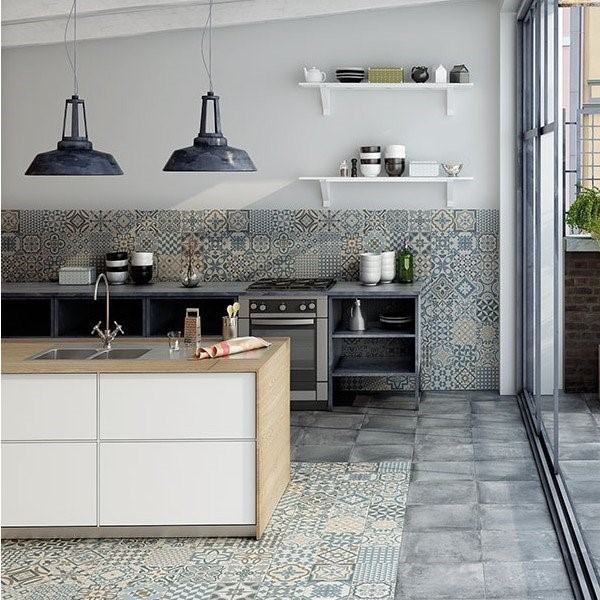
Successful size and format mixing in kitchen and floor tiles creates visual interest, defines spaces, and optimizes material usage while maintaining proportional relationships and installation feasibility that ensure professional results and long-term performance across different tile dimensions.
Strategic Size Mixing for Kitchen and Floor Tiles:
- Large format and small tile combinations creating scale contrast
- Uniform thickness coordination ensuring smooth transitions between sizes
- Grout line consistency maintaining visual continuity across different formats
- Installation pattern coordination optimizing layout and material usage
- Functional zoning using size variations to define different areas
- Proportion relationships ensuring sizes work harmoniously together
- Professional installation requirements for mixed-size installations
- Cost optimization through strategic size selection and placement
Large format and small tile combinations in kitchen and floor tiles create dramatic visual effects through scale contrast while providing functional benefits. Large tiles can serve as primary surfaces while small tiles create accent areas, borders, or detailed work that adds personality and visual interest to installations.
The importance of uniform thickness in mixed kitchen and floor tiles cannot be overstated, as variations in tile thickness can create lippage, uneven surfaces, and installation challenges that compromise both appearance and functionality. Professional installers can address thickness variations through appropriate substrate preparation and installation techniques.
Grout line consistency helps unify different sized kitchen and floor tiles by maintaining consistent spacing and color throughout mixed installations. Strategic grout selection can either emphasize size differences or minimize them, depending on desired visual effects and design goals.
Installation pattern coordination becomes complex with mixed-size kitchen and floor tiles, requiring careful planning to ensure patterns align properly and create intentional rather than accidental appearances. Professional layout planning helps optimize material usage while achieving desired aesthetic effects.
Functional zoning through size variation in kitchen and floor tiles can define different areas without physical barriers, using larger tiles for main traffic areas and smaller tiles for accent zones, borders, or detailed work that requires more intricate installation techniques.
5. Material Type Combinations for Kitchen and Floor Tiles
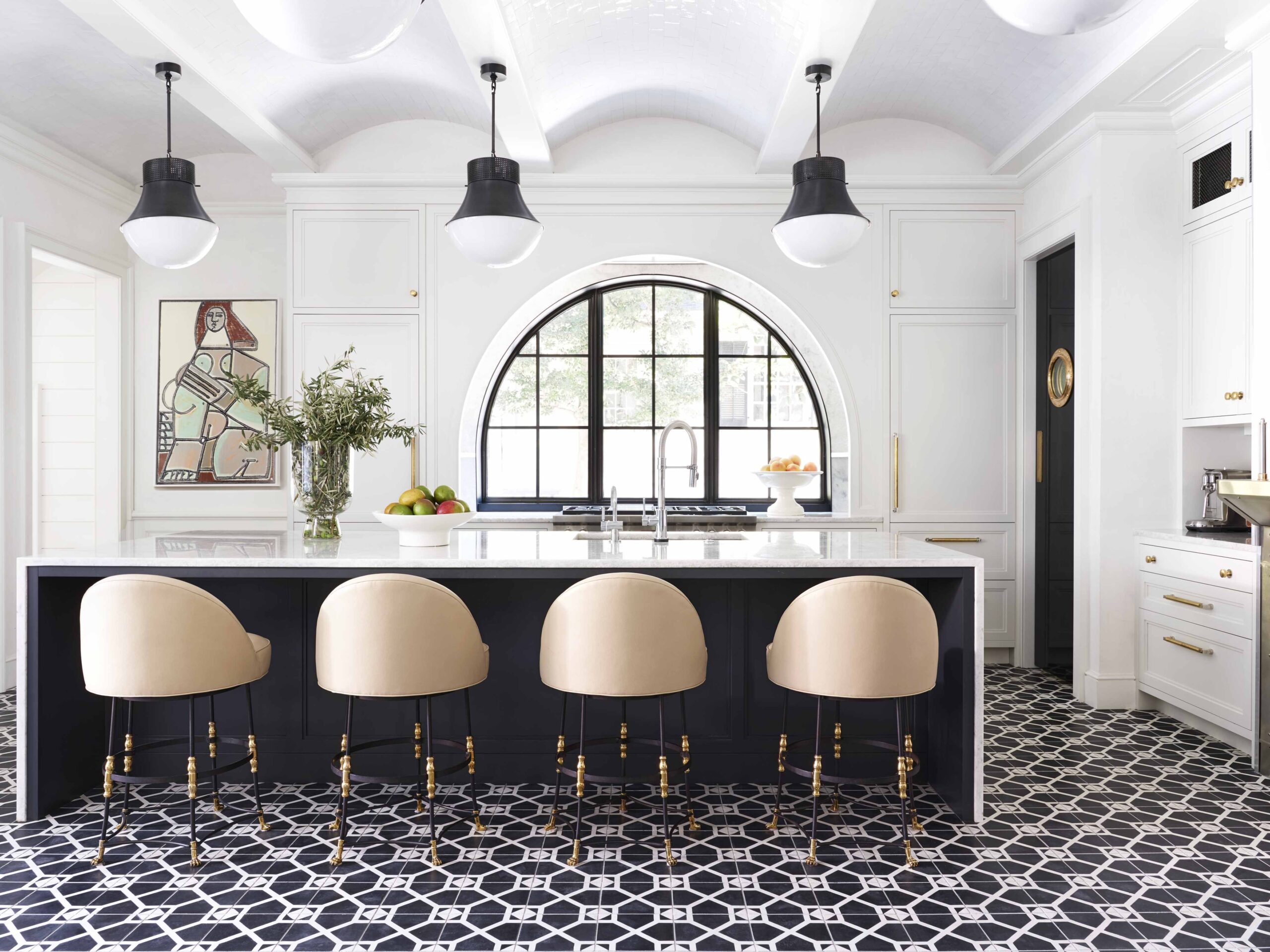
Combining different material types in kitchen and floor tiles installations creates unique aesthetic effects while optimizing performance characteristics for specific applications, requiring understanding of compatibility, installation requirements, and maintenance considerations that ensure successful mixed-material results.
Successful Material Mixing for Kitchen and Floor Tiles:
- Ceramic and porcelain combinations optimizing cost and performance
- Natural stone and manufactured tile pairings blending authenticity with practicality
- Glass and ceramic integrations creating luminous effects and easy maintenance
- Metal accent tiles adding contemporary sophistication selectively
- Wood-look and stone-look combinations creating warm, natural aesthetics
- Compatibility considerations ensuring successful installation and performance
- Maintenance coordination addressing different material requirements
- Professional installation ensuring optimal results across material types
Ceramic and porcelain combinations in kitchen and floor tiles allow homeowners to optimize both cost and performance by using more expensive porcelain in high-wear areas while utilizing ceramic tiles in lower-stress applications. This strategic approach maximizes value while maintaining consistent aesthetic themes.
Natural stone and manufactured tile combinations create sophisticated kitchen and floor tiles installations that blend authentic material beauty with practical manufactured tile benefits. Natural stone can serve as accent elements while manufactured tiles provide primary coverage with consistent quality and easier maintenance.
Glass and ceramic tile combinations offer brilliant possibilities for kitchen and floor tiles mixing, with glass tiles creating luminous accent areas while ceramic provides durable, cost-effective primary coverage. The reflective properties of glass enhance lighting while ceramic provides practical performance.
Metal accent tiles add contemporary sophistication to kitchen and floor tiles installations when used strategically as borders, focal points, or accent elements. Stainless steel, copper, and aluminum tiles can complement ceramic or stone primary materials while providing unique aesthetic effects.
Wood-look and stone-look tile combinations create warm, natural aesthetics in kitchen and floor tiles installations while maintaining the practical benefits of manufactured materials. These combinations work particularly well in transitional design styles that blend natural and contemporary elements.
6. Installation Techniques for Mixed Kitchen and Floor Tiles
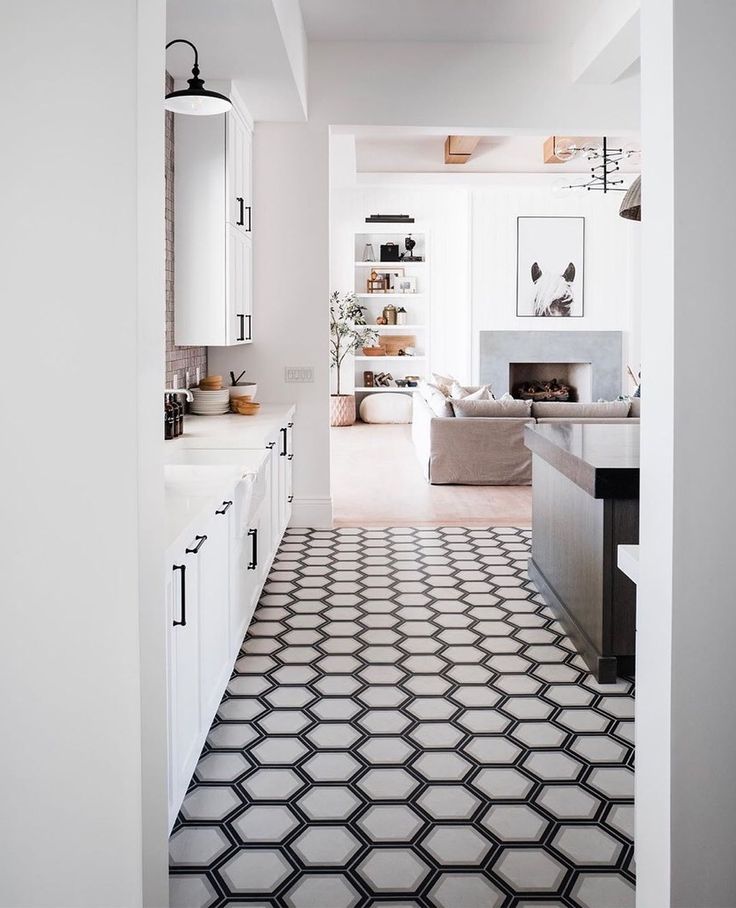
Professional installation techniques for mixed kitchen and floor tiles require specialized knowledge, careful planning, and precise execution to ensure that different materials, sizes, and patterns work together seamlessly while maintaining long-term performance and aesthetic appeal across complex installations.
Professional Installation for Mixed Kitchen and Floor Tiles:
- Substrate preparation accommodating different material requirements
- Transition planning ensuring smooth connections between different tiles
- Adhesive selection optimizing bonding for various material types
- Layout optimization minimizing cuts and maximizing visual impact
- Leveling techniques preventing lippage across different tile thicknesses
- Grout selection coordinating colors and performance across materials
- Expansion joint planning accommodating different expansion rates
- Quality control ensuring consistent results throughout mixed installations
Substrate preparation becomes critical for mixed kitchen and floor tiles installations as different materials may have varying requirements for adhesion, support, and moisture protection. Professional preparation ensures that all materials perform optimally regardless of their specific requirements.
Transition planning addresses the challenges of connecting different kitchen and floor tiles materials, sizes, or patterns in ways that appear intentional and professional rather than accidental or poorly planned. Strategic transition techniques create smooth visual flow between different elements.
Adhesive selection requires understanding the specific bonding requirements of different kitchen and floor tiles materials, with some requiring specialized adhesives for optimal performance. Professional installers select appropriate adhesives for each material type while ensuring compatibility across the installation.
Layout optimization in mixed kitchen and floor tiles installations requires careful planning to minimize cuts, maximize visual impact, and ensure that patterns align properly across different materials and sizes. Computer-aided design tools help visualize complex layouts before installation begins.
Leveling techniques prevent lippage and ensure smooth surfaces across mixed kitchen and floor tiles installations where different materials may have varying thicknesses. Professional installation techniques address these challenges while maintaining consistent surface levels.
7. Design Themes and Style Coordination for Kitchen and Floor Tiles

Successful design themes and style coordination in mixed kitchen and floor tiles installations require understanding how different materials, colors, and patterns support specific design aesthetics while maintaining coherent visual themes that enhance overall interior design goals and personal style preferences.
Style Coordination for Mixed Kitchen and Floor Tiles:
- Contemporary themes emphasizing clean lines and minimal color palettes
- Traditional styles incorporating classic patterns and natural materials
- Transitional approaches blending contemporary and traditional elements
- Industrial aesthetics featuring metal accents and concrete-look materials
- Mediterranean influences using natural stone and warm color palettes
- Scandinavian minimalism emphasizing light colors and natural textures
- Bohemian eclecticism celebrating pattern mixing and vibrant colors
- Professional design guidance ensuring cohesive style implementation
Contemporary design themes in mixed kitchen and floor tiles emphasize clean lines, minimal color palettes, and sophisticated material combinations that create sleek, uncluttered appearances. Large format tiles combined with strategic accent elements work well in contemporary settings.
Traditional style coordination for kitchen and floor tiles incorporates classic patterns, natural materials, and time-tested color combinations that create warm, inviting atmospheres. Natural stone combined with ceramic tiles in traditional patterns supports classic design aesthetics.
Transitional approaches to mixed kitchen and floor tiles blend contemporary and traditional elements to create sophisticated, versatile designs that work with various furnishing styles. These approaches often combine modern materials with classic patterns or traditional materials with contemporary installation techniques.
Industrial aesthetics in kitchen and floor tiles mixing feature metal accents, concrete-look materials, and neutral color palettes that create urban, loft-like atmospheres. Combining ceramic tiles with metal accents or concrete-look porcelain creates authentic industrial appeal.
Mediterranean influences utilize natural stone, warm color palettes, and textured surfaces in kitchen and floor tiles combinations that evoke coastal European aesthetics. Travertine combined with ceramic tiles in warm, earth-tone colors supports Mediterranean design themes.
8. Maintenance and Longevity Considerations for Mixed Kitchen and Floor Tiles
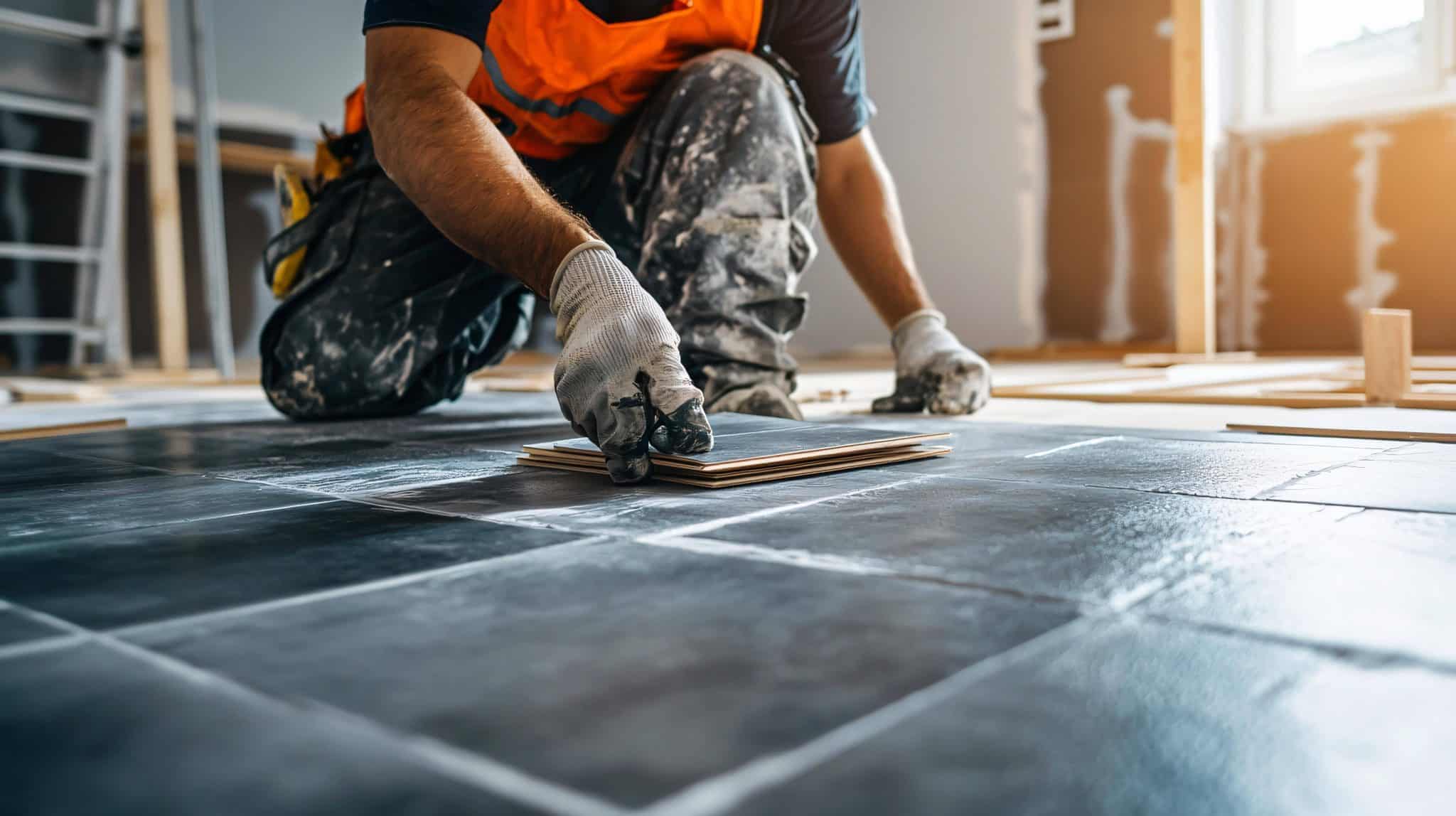
Understanding maintenance and longevity considerations for mixed kitchen and floor tiles installations ensures that beautiful designs continue performing optimally over time while addressing the unique challenges that arise from combining different materials with varying care requirements and performance characteristics.
Maintenance Planning for Mixed Kitchen and Floor Tiles:
- Compatible cleaning products safe for all materials in mixed installations
- Maintenance scheduling addressing different material requirements efficiently
- Sealing requirements varying across natural and manufactured materials
- Wear pattern monitoring ensuring consistent appearance over time
- Professional maintenance services for complex mixed installations
- Replacement planning for individual materials within mixed systems
- Long-term performance expectations across different material types
- Warranty considerations covering mixed material installations
Compatible cleaning products become essential for mixed kitchen and floor tiles installations where different materials may have conflicting care requirements. pH-neutral cleaners typically work safely across most tile materials while specialized products may be needed for specific materials.
Maintenance scheduling for mixed kitchen and floor tiles should address the different requirements of various materials efficiently, with natural stone requiring periodic sealing while manufactured tiles need only basic cleaning. Coordinated maintenance schedules optimize time and effort while ensuring all materials receive appropriate care.
Sealing requirements vary significantly across mixed kitchen and floor tiles installations, with natural stone typically requiring periodic sealing while porcelain and ceramic tiles are maintenance-free. Understanding these differences helps plan appropriate maintenance routines and budgets.
Wear pattern monitoring helps ensure consistent appearance across mixed kitchen and floor tiles installations where different materials may age differently. Regular inspection helps identify areas requiring attention before problems become serious or costly to address.
Professional maintenance services provide valuable support for complex mixed kitchen and floor tiles installations where specialized knowledge and equipment may be required for optimal care. These services help preserve investments in premium materials and complex installations.
Conclusion
Mixing and matching kitchen and floor tiles successfully requires understanding fundamental design principles including color coordination, pattern relationships, texture combinations, and scale proportions that create harmonious, sophisticated installations rather than chaotic or overwhelming appearances.
Color coordination forms the foundation of successful kitchen and floor tiles mixing, utilizing proven color theory principles and strategic approaches that create visual unity while allowing for creative expression and personality development through accent colors and focal points.
Pattern and scale relationships enable dynamic visual effects in mixed kitchen and floor tiles installations through careful balance of different design elements that create hierarchy, movement, and interest while maintaining overall coherence and professional appearance.
Texture combinations add tactile interest and functional benefits to kitchen and floor tiles mixing while requiring consideration of maintenance compatibility and performance requirements that ensure long-term satisfaction with mixed installations.
Size and format mixing creates opportunities for creative expression and functional optimization in kitchen and floor tiles installations while requiring professional planning and installation to achieve optimal results and long-term performance.
Material type combinations enable optimization of both aesthetic and functional characteristics in kitchen and floor tiles installations while requiring understanding of compatibility, installation, and maintenance considerations that ensure successful results.
Professional installation and appropriate maintenance preserve the beauty and performance of mixed kitchen and floor tiles installations while protecting the investment in quality materials and sophisticated design approaches that create unique, personalized spaces.
The key to successful kitchen and floor tiles mixing lies in balancing creative expression with proven design principles while considering practical requirements including durability, maintenance, and long-term performance that ensure beautiful results continue satisfying homeowners for years to come.
How do I choose colors when mixing different kitchen and floor tiles?
Choose colors for mixed kitchen and floor tiles by establishing a cohesive color palette using monochromatic, analogous, or complementary color schemes. Start with a neutral base (60% of the installation) in whites, grays, or beiges, add a secondary color (30%) for depth, and use accent colors (10%) for personality. Consider natural lighting conditions as they affect color appearance throughout the day. Test color combinations in actual lighting conditions before finalizing selections. Maintain consistent color temperature (warm or cool) throughout the palette, or strategically balance warm and cool tones. Use color to define functional zones and create focal points while maintaining overall harmony.
Can I mix different tile materials like ceramic, porcelain, and natural stone?
Yes, you can successfully mix different tile materials like ceramic, porcelain, and natural stone in kitchen and floor tiles installations with proper planning. Ensure compatible thicknesses to prevent lippage and uneven surfaces. Consider different expansion rates and use appropriate transition strips if needed. Coordinate maintenance requirements - natural stone needs sealing while porcelain and ceramic are maintenance-free. Use compatible adhesives appropriate for each material type. Consider performance characteristics - use more durable materials in high-traffic areas. Professional installation is recommended for mixed-material projects to ensure proper techniques and optimal results. Plan transitions carefully to create intentional rather than accidental appearances.
What are common mistakes to avoid when mixing kitchen and floor tiles?
Common mistakes when mixing kitchen and floor tiles include using too many different patterns creating visual chaos, ignoring scale relationships resulting in competing elements, mixing incompatible thicknesses causing lippage, using clashing color temperatures, and inadequate transition planning. Avoid using more than three different patterns in one space. Don't mix warm and cool colors randomly - maintain consistent temperature or balance strategically. Ensure all tiles have compatible installation requirements and maintenance needs. Don't ignore grout line consistency across different tile sizes. Avoid placing busy patterns in small spaces where they can overwhelm. Plan professional installation for complex mixed installations to prevent technical problems.
How do I maintain mixed kitchen and floor tiles with different materials?
Maintain mixed kitchen and floor tiles by using pH-neutral cleaners safe for all materials, developing coordinated maintenance schedules addressing different requirements, and understanding specific needs of each material type. Natural stone requires periodic sealing (every 1-2 years) while ceramic and porcelain need only basic cleaning. Use separate cleaning products if materials have conflicting requirements. Establish regular cleaning routines including daily sweeping, weekly mopping, and periodic deep cleaning. Monitor wear patterns across different materials and address issues promptly. Consider professional maintenance services for complex installations. Keep maintenance records and warranty information for all materials. Plan for eventual replacement of individual materials within the mixed system.
Sources/References
- Tile Council of North America – Mixed Installation Guidelines https://www.tcnatile.com/
- National Kitchen and Bath Association – Design Standards https://nkba.org/
- Ceramic Tile Distributors Association – Material Compatibility https://www.ctdahome.org/
- American Society of Interior Designers – Color and Pattern Guidelines https://www.asid.org/
- Natural Stone Institute – Mixed Material Installation https://www.naturalstoneinstitute.org/
- International Association of Certified Home Inspectors – Tile Installation https://www.nachi.org/
- National Tile Contractors Association – Professional Installation Standards https://www.tile-assn.com/
- Porcelain Tile Certification Agency – Quality Standards https://www.ptca.com/


